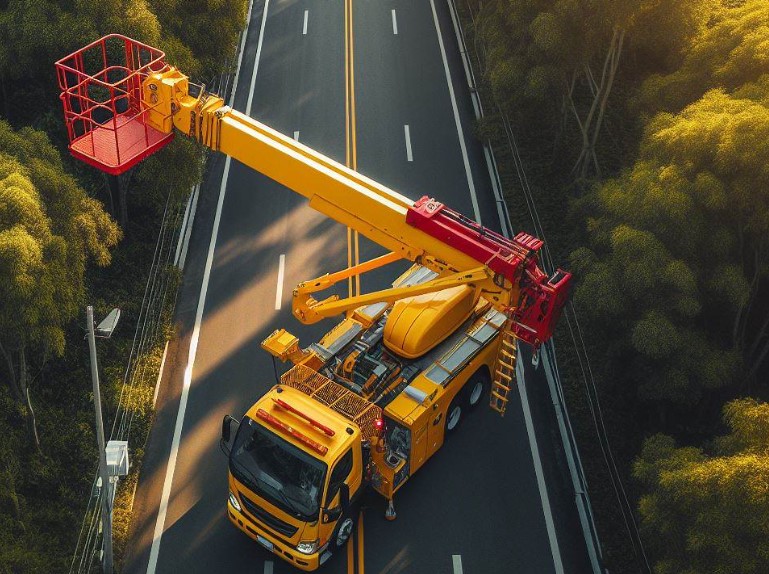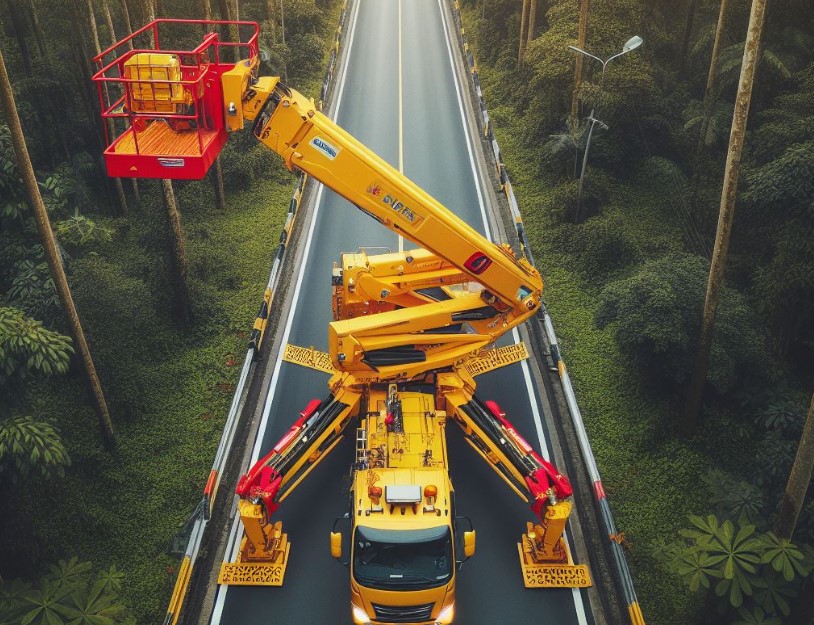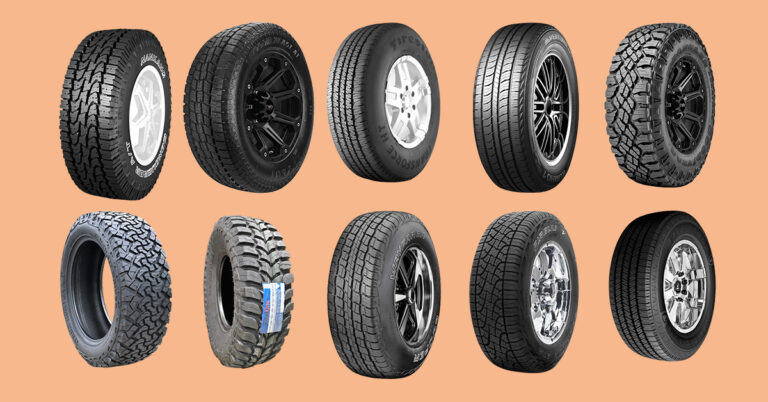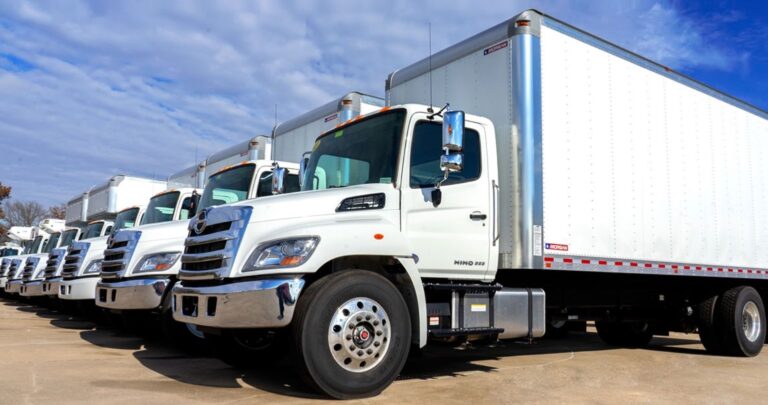How Wide Is A Bucket Truck? All You Need To Know
This article delves deep into the question, How Wide Is A Bucket Truck? We aim to provide comprehensive insights into the various aspects that define the width of these versatile vehicles. In today’s world, bucket trucks play a vital role in various industries, from utility maintenance to construction.
Understanding the dimensions of a bucket truck, especially its width, is crucial for ensuring safe and efficient operation. The width of a bucket truck is not just a simple measurement; it determines the vehicle’s accessibility and maneuverability in different environments.
Key Takeaways
- Bucket Truck Widths: Vary depending on the model and purpose.
- Importance of Width: Affects maneuverability and job-site accessibility.
- Industry Standards: Govern the dimensions for safety and efficiency.
How Wide Is A Bucket Truck?
Typically, a standard bucket truck’s width ranges from 7 to 8 feet (2.1 to 2.4 meters). However, this can vary based on the truck’s design and intended use.
Compact models might be narrower, while heavier-duty trucks could be wider. The width is a critical factor for maneuverability and determines the truck’s ability to navigate through narrow streets or confined spaces.

Factors Affecting Bucket Truck Width
- Model and Make: Different manufacturers have varying standard widths.
- Purpose: Trucks designed for urban environments are often narrower.
Significance of Bucket Truck Width in Various Industries
The width of a bucket truck significantly impacts its usability across different sectors. In the utility sector, a narrower truck can maneuver through tight city lanes, whereas in construction, a wider base might provide better stability.
Utility Industry
- Urban Maintenance: Requires narrower trucks for street access.
- Rural Operations: Wider trucks can be used due to open spaces.
Construction Industry
- Stability: Wider trucks provide better balance during operations.
- Large Sites: Accommodate wider trucks easily, enhancing work efficiency.
Design Elements Influencing Bucket Truck Width
The design of a bucket truck directly impacts its width. Factors like the chassis, stabilizers, and storage compartments all play a role in determining the overall width.
Chassis and Stabilizers
- Chassis Size: Larger chassis result in a wider truck.
- Stabilizers: Extend beyond the truck’s base, adding to the width.
Storage Compartments
- Tool Storage: Added compartments for tools can increase the width.
- Customization: Specific modifications might alter the standard width.
Comparison of Bucket Truck Widths Across Brands
Different brands offer bucket trucks with varying widths, catering to diverse industry needs. Brands like Altec, Versalift, and Terex have models ranging in width, suited for different applications.

Altec
- Models: Offer a range of widths for different utility purposes.
Versalift
- Narrow Designs: Specialized for urban utility work.
Operational Considerations for Bucket Truck Width
The operational efficiency of a bucket truck heavily relies on its width. It impacts the truck’s ability to access job sites and the safety of the operations.
Job Site Accessibility
- Narrow Sites: Require trucks with a smaller width for access.
Safety Considerations
- Stability and Maneuverability: Wider trucks are often more stable but less maneuverable.
Legal and Regulatory Aspects of Bucket Truck Width
There are legal limitations and safety regulations that dictate the maximum allowable width for bucket trucks on public roads.
Road Regulations
- Maximum Width: Often set by transportation authorities to ensure road safety.
Safety Standards
- Industry Guidelines: Dictate the width for operational safety.
How Much Clearance Does A Bucket Truck Need?
When operating a bucket truck, clearance is a crucial factor to consider for ensuring safety and effective performance. The required clearance for a bucket truck generally includes vertical and horizontal space needed for safe operation.

Vertically, a bucket truck requires clearance that accounts not only for the height of the truck but also for the full extension of the boom and the worker standing in the bucket. This typically ranges from 15 to 20 feet above the truck to avoid contact with overhead obstacles like power lines or tree branches.
Horizontally, clearance is needed on either side of the truck to ensure stability and safe operation. This includes space for stabilizers and outriggers, which can extend several feet from the truck’s base.
The required horizontal clearance can vary but generally needs to be at least 10 to 15 feet on each side. This allows the truck to be positioned safely and the boom to be operated without risk of collision or instability.
In urban areas or tight job sites, ensuring adequate clearance can be challenging. It’s essential to assess the environment and obstacles before deploying a bucket truck to ensure it can operate safely.
How Far Does A Bucket Truck Extend?
The extension capacity of a bucket truck’s boom is a key aspect of its functionality. The reach of a bucket truck varies significantly depending on the model and design.
Generally, bucket trucks can have a vertical reach ranging from about 35 feet to over 100 feet. This vertical reach refers to the height the bucket can be raised from the ground level.

In addition to vertical reach, the horizontal reach of the bucket truck is also important, especially when working in areas where the truck cannot be positioned directly beneath the work site. Horizontal reach can vary, with some trucks capable of extending 50 feet or more from the base.
The combination of vertical and horizontal reach determines the overall working envelope of the truck and is a crucial factor in selecting the right bucket truck for specific tasks.
It’s important to note that the stability and capacity of the bucket truck can be affected as the boom extends. Operators must adhere to manufacturer guidelines and safety standards to ensure safe operation at full extension.
What Is The Anatomy Of A Bucket Truck?
The anatomy of a bucket truck involves several key components that work together to provide its unique capabilities. Understanding these components is essential for operators and technicians.
- Chassis: The base of the bucket truck, typically a standard vehicle chassis, which is modified to accommodate the bucket and boom assembly.
- Boom: The extendable arm that raises the bucket. It can be telescopic, articulated, or a combination of both, providing vertical and horizontal reach.
- Bucket: Also known as the basket, it’s where the operator stands to perform tasks. Buckets come with safety harness attachments and controls.
- Outriggers and Stabilizers: These extend from the sides of the truck to provide stability during operation, especially when the boom is extended.
- Hydraulic System: Powers the boom and bucket movement. This system includes pumps, cylinders, and controls that manage the flow and pressure of hydraulic fluid.
- Control Panel: Located in the bucket and at the base of the truck, these controls allow the operation of the boom and other functions.
- Storage Compartments: Integrated into the truck for storing tools and equipment.
- Power Source: Bucket trucks may have an independent engine or use the truck’s engine for power, depending on the design.
Understanding these components helps in the effective and safe operation of bucket trucks, as well as in troubleshooting and maintenance.
Conclusion
Understanding the width of a bucket truck is more than just a dimensional query; it’s about comprehending its impact on operational efficiency, safety, and accessibility.
From compact designs for urban environments to wider models for stability, the width of a bucket truck is a key factor that varies depending on the intended use and design specifications.
Emphasizing the need for adherence to safety standards and legal regulations, the width of these trucks plays a pivotal role in their versatility and effectiveness across various industries.
People Also Ask
Can the width of a bucket truck be customized?
While standard bucket truck models come with fixed widths, some manufacturers offer customization options. This can include modifications to the chassis, stabilizers, or adding/removing storage compartments, which can alter the truck’s width to suit specific needs. However, it’s important to ensure that any customizations adhere to safety and legal standards.
How does the width of a bucket truck affect its transportability?
The width of a bucket truck directly affects its transportability. Wider trucks may require special permits or routes to be transported over long distances, as they may exceed standard vehicle width restrictions on certain roads. This can impact the logistics and cost of transporting the truck.
How does the width of a bucket truck impact safety?
The width of a bucket truck impacts safety in terms of stability and maneuverability. A wider truck generally offers more stability, especially when the bucket is in use at height, reducing the risk of tipping. However, a narrower truck is more maneuverable in confined spaces, which can be crucial in urban settings.
Do different brands of bucket trucks have different widths?

Welcome to the exhilarating world of Matt Rex, a professional car racer turned renowned vehicle enthusiast. Immerse yourself in his captivating blog as he shares heart-pounding adventures, expert reviews, and valuable insights on cars, trucks, jets, and more. Fuel your passion for speed and discover the beauty of vehicles through Matt’s engaging stories and meticulous expertise. Join the ever-growing community of enthusiasts who find inspiration and expert advice in Matt Rex’s blog—a digital hub where the thrill of speed meets the pursuit of knowledge.







